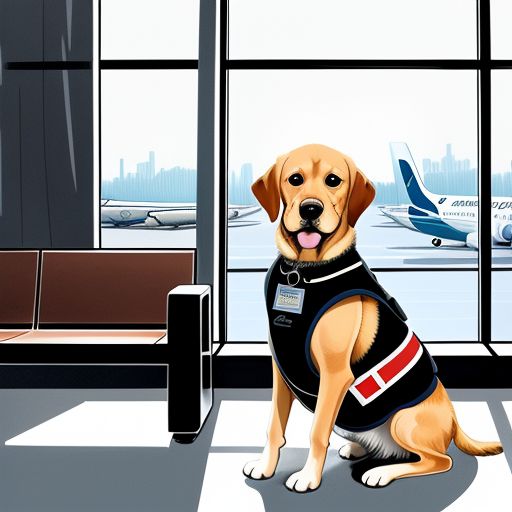Embarking on a journey with a service animal requires careful planning and understanding of various regulations. This guide will walk you through the essential aspects of traveling with service animals, from distinguishing them from emotional support animals to navigating airports, airplanes, and customs procedures.
Service Animals vs. Emotional Support Animals: Understanding the Difference
Before delving into travel specifics, it’s crucial to understand the distinction between service animals and emotional support animals (ESAs).
Service Animals:
- Are individually trained to perform specific tasks for people with disabilities
- Are typically dogs, though miniature horses may also qualify in some cases
- Have legal protections under the Americans with Disabilities Act (ADA)
Emotional Support Animals:
- Provide comfort through their presence
- Do not require specific task training
- Have limited legal protections compared to service animals
This distinction is vital as it affects the animal’s access rights during travel.
Preparing for Your Journey: What to Expect at the Airport
Traveling with a service animal begins well before you reach the airport. Here’s what you need to know:
- Documentation: While not always required, it’s wise to carry documentation about your service animal’s training and health records.
- Notification: Inform the airline about your service animal when booking your flight.
- Airport Security: Your service animal will need to go through security screening. Be prepared for a pat-down if the animal’s harness sets off metal detectors.
- Relief Areas: Most airports have designated animal relief areas. Locate these before your flight.
Remember, airports can be stressful environments for animals. Keep your service animal close and under control at all times.
On the Airplane: Rules and Etiquette
Once you board the plane, there are specific guidelines to follow:
- Placement: Your service animal must be able to fit at your feet, under the seat in front of you, or on your lap.
- Behavior: The animal must be well-behaved and under your control throughout the flight.
- Long Flights: For flights over 8 hours, you may need to provide documentation about the animal’s ability to relieve itself in a sanitary manner.
- Restrictions: Service animals cannot block aisles or emergency exits.
Airlines are required to accommodate service animals, but they may refuse if the animal poses a direct threat to health or safety.
Navigating US Customs and Immigration
Entering the United States with a service animal involves additional considerations:
- Health Certificates: Ensure your service animal has up-to-date health certificates and rabies vaccinations.
- CDC Regulations: Be aware of CDC regulations regarding the importation of animals, which can vary based on the country you’re traveling from.
- Quarantine: Some animals may be subject to quarantine upon arrival, depending on their origin.
- Identification: Consider microchipping your service animal for easy identification.
Service Animals, like all animals, entering the United States must meet all the importation requirements of federal and state agencies. Happy Pets Travel will help you navigate the process to make entry into the United States as smooth as possible. Learn More …
Tips for a Smooth Journey
To ensure a stress-free trip with your service animal:
- Practice airport-like situations at home to familiarize your animal with travel scenarios.
- Pack essentials like food, water, and any necessary medications for your service animal.
- Allow extra time for security procedures and potential delays.
- Be prepared to advocate for your rights if necessary, but always remain calm and polite.
Conclusion
Traveling with a service animal requires thorough preparation and understanding of various regulations. By familiarizing yourself with the rules and planning ahead, you can ensure a smooth journey for both you and your invaluable companion. Remember, regulations may vary by country and airline, so always double-check the most current information before your trip.






